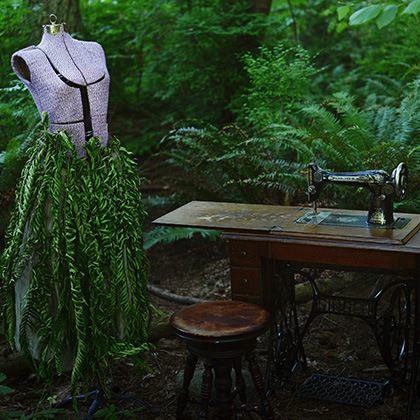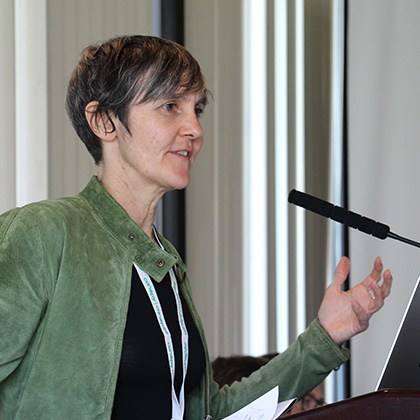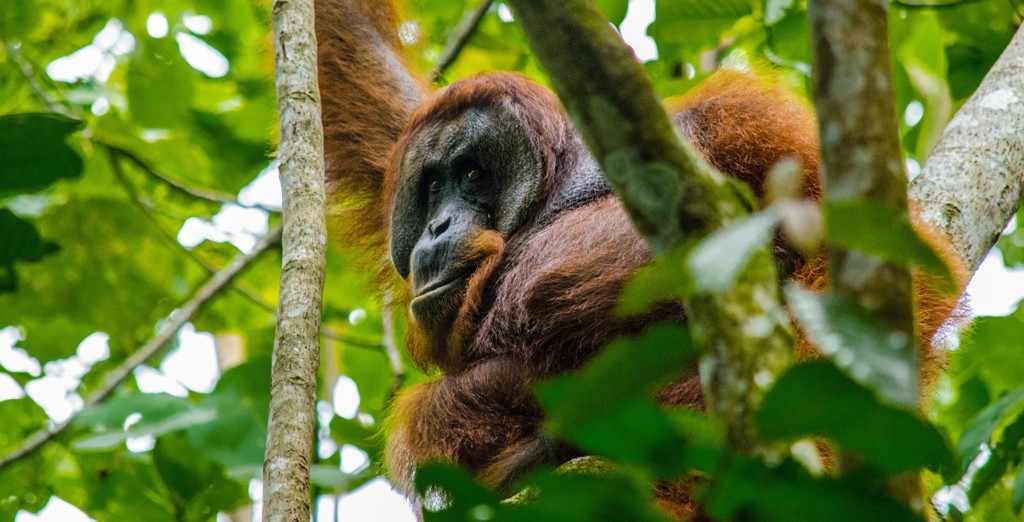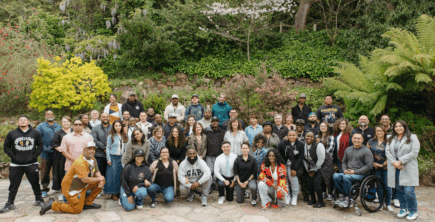
LGBT

Forests into Fashion, Canopy.

Canopy Founder and Executive Director, Nicole Rycroft
For six years, Tides has partnered with Canopy, a nimble, growing Canadian-based nonprofit organization with a big mission: to protect the world’s remaining old growth forests by acting as the bridge between the conservation community and the business community. By providing businesses with scalable solutions to improve their supply chain while maintaining market competition, Canopy aims to put a halt to forest destruction where it starts: at the source.
The organization’s latest campaign, CanopyStyle “follows the thread” from fiber production to the shirt that ends up in your closet. Never thought that trees were a part of your wardrobe? According to Canopy, 150 million trees go into clothing fibers each year and that figure is slated to double. In an effort to raise awareness about the link between fashion and forests, Canopy is working with over 160 brands including H&M, Gap, Inc. and Stella McCartney to help them understand that “being stylish doesn’t have to cost the Earth.”
Tides recently sat down with Canopy’s Executive Director and Founder, Nicole Rycroft, to discuss Canopy’s systems-level approach to global forest protection and to get her thoughts on what makes Canopy’s strategy so successful.
In a nutshell, can you explain how forests and fashion are linked?
It’s not an intuitive link: it’s hard to connect something soft and silky on your skin to something that can give you a splinter! Mainly, the connection between fashion and forests is the various raw materials like cellulose that are sourced from trees and end up as fabrics like viscose, rayon, and modal. We have the opportunity at the supply chain to shift towards a more sustainable path and that’s what Canopy focuses on.
Impact [means] leveraging the power of the marketplace to transform unsustainable supply chains and kickstart the next generation of solutions at scale that are proportional to the challenges we face as a global society.
How does Canopy define “impact”?
Canopy is unabashedly ambitious. Impact to us means setting goals and delivering on those goals. For Canopy, impact also equals leveraging the power of the marketplace to transform unsustainable supply chains and kickstart the next generation of solutions at scale that are proportional to the challenges we face as a global society. For example, we promote the use of recycled materials like straw versus high carbon virgin forests. Impact can also be defined as supporting local communities on the ground. A good example of this approach is the Great Bear Rainforest, a 60 million acre forest where 90% was originally open for logging, but today, 85% of the GBR is protected under a formal recognition of indigenous rights and a 120 million dollar fund to help communities transition.

Forests into Fashion, Canopy.
What’s your strategy for expanding the CanopyStyle campaign and engaging with so many influential name brands?
4.5 years ago, we launched from zero brands to 161 brands today. We wanted to take the “granola factor” out of environmental conservation to make it more appealing to a broader, mainstream audience—hence the fashion angle. Generally, we’re focused on engaging brands that are open to pushing their supply chain, stepping forward and advocating for conservation on the ground. We also target transforming unsustainable supply chains and harnessing policy commitments to capture the attention and commitment of viscose producers themselves. Canopy first started with European brands such as H&M, Zara, and Stella McCartney and eventually moved to North American brands like Gap, Inc. We’re now moving into the rapidly growing SE Asian market with brands like Uniqlo.
How do the 161 participating brands turn engagement into action within their supply chains?
Having a direct line of dialogue with viscose producers is key, as the viscose supply chain is very convoluted and has many layers. Canopy is therefore working to simplify the process jointly alongside brands and suppliers and focus on what kinds of questions need to be asked. Per example, Inditex (Zara) set up a clothing capture program and one of the world’s largest viscose producers created recycled (20%) products vs. using virgin wood. It’s a positive start which Canopy hopes will have influential and lasting supply chain effects.
Can you explain what the “thread” is in CanopyStyle Follows the Thread?
We’re playing on the fact that clothing is made from thread and is woven into fabrics that we all wear everyday. It’s personal. We want to consciously draw the link from fashion to the forest floor, where many clothing fibers originate.
Can you talk more about why the Leuser Ecosystem is so important?
The Leuser Ecosystem, located on the island of Sumatra in Indonesia, provides for 4 million people and is a critical carbon sink. It’s also the last place on Earth that has elephants, rhinos and tigers co-existing in the wild and we must protect it! Logging, palm oil, and eucalyptus plantations as well as mining feed into the destruction of this special place, and packaging and clothing production is a part of that process. A recent change of local government means that regional leaders are more interested in conservation opportunities and conservation financing than in prior years. Canopy is taking advantage of this welcome shift.
How does Canopy engage local communities in their campaigns?
Canopy is a power broker for environmental change. The vast majority of the work we do takes place in the marketplace and influences political and economic opportunities at scale. This process, however, needs to be socially durable as well. As a result, Canopy works with local NGO partners to talk directly with communities and negotiates with their needs in mind.

Broadback Rainforest, Canada.
Canopy partners with Tides to help power U.S. giving. How does Canopy’s strategic relationship with Tides support Canopy’s important global work?
Tides elevates Canopy’s work to mobilize the marketplace and helps get our message out to a broader audience. Canopy is modestly resourced but growing, and as we grow our partnership with Tides, we continue to open access to new donors helping us expand our network in the U.S. Tides also drives partnerships that instill change on the ground. For example, Tides has helped Canopy bring like-minded organizations together for the Love the Leuser campaign, which acts as a communications and fundraising portal where people can donate under one umbrella to support this vital ecosystem.
Give positive feedback to those brands that step up to protect old growth forests. There is no need for us to be using 600 year old trees to make T-shirts or suit linings or the Amazon box that those clothes arrived in at our doorstep.
What can consumers do to lessen their fashion footprint?
Canopy takes “retail therapy to a whole new level” with a goal to make sure that we’re investing in brands that will actually last and have good quality craftsmanship. Given the average consumer buys 70 pieces of clothing a year with 85% of that ending up in a landfill, we believe strongly that consumers can take action by choosing where they spend their dollars—ideally on clothing that they will love and use for a long time. Consumers can also inquire as to which brands are working with CanopyStyle and give positive feedback to those brands that step up to protect old growth forests. There is no need for us to be using 600 year old trees to make T-shirts or suit linings or the Amazon box that those clothes arrived in at our doorstep.
Canopy has such a positive strategy for overcoming quite a daunting challenge. Can you talk more about that?
No one likes to join the army of the glum and the environmental movement is notorious for using depressing messaging, which doesn’t tend to inspire. What drew me to the work was an infectious love of wild places and a sense that we can be doing things smarter—we don’t need to use 800 year old trees when we can be using recycled materials, for example. Canopy is very solutions focused and is constantly looking at how we can address these issues and how we bring solutions to the market at scale. A common false dichotomy is that we live in only a supply/demand world when there are many more elements to consider.

Orangutan. Credit: Kevin D’Sauve.
For more on this great work, read Canopy’s Story of Impact with Tides.

LGBT

Corporate Partners

Philanthropy

Read the stories and hear the voices of social change leaders fighting for justice.